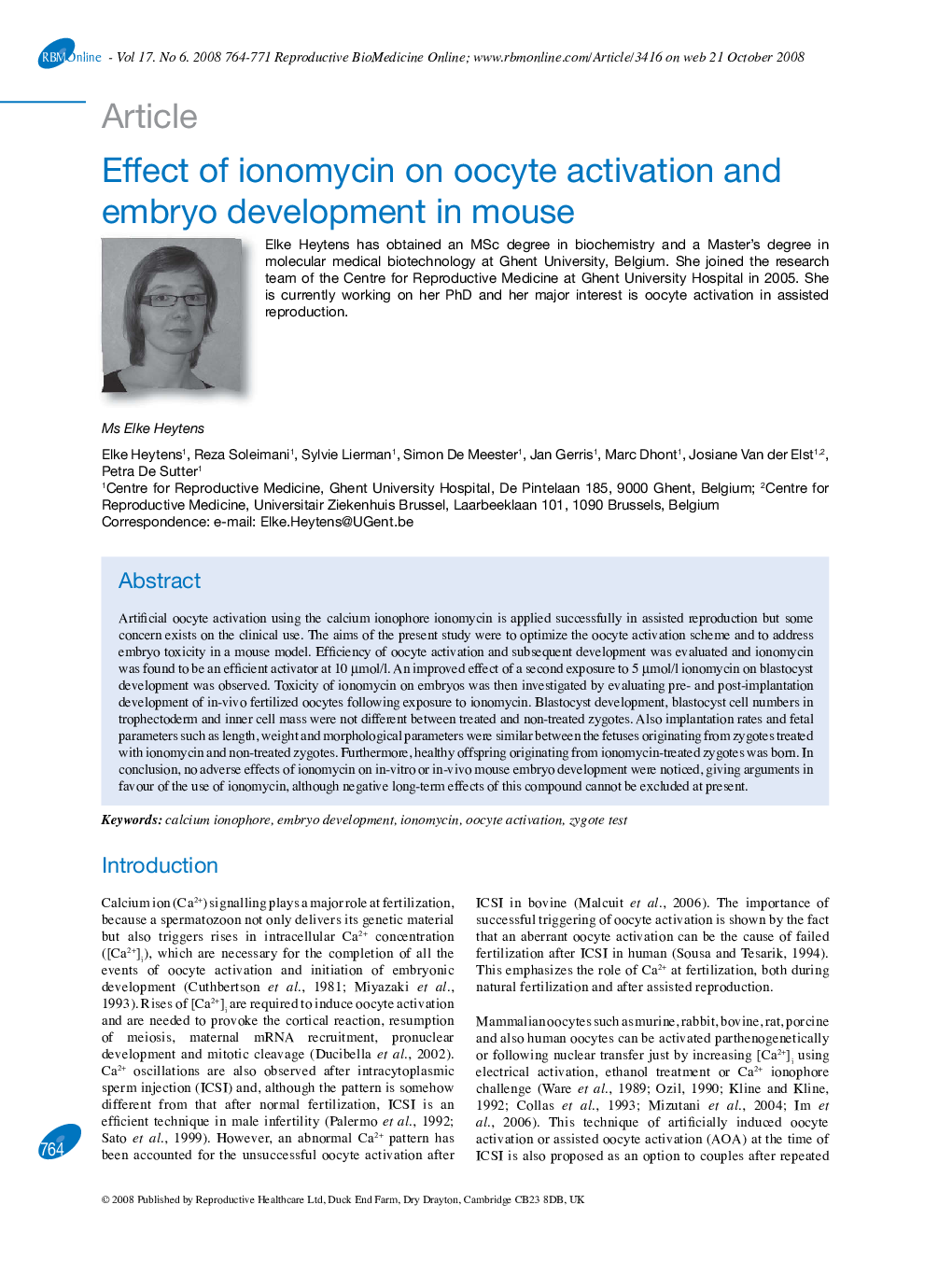| Article ID | Journal | Published Year | Pages | File Type |
|---|---|---|---|---|
| 3972301 | Reproductive BioMedicine Online | 2008 | 8 Pages |
Artificial oocyte activation using the calcium ionophore ionomycin is applied successfully in assisted reproduction but some concern exists on the clinical use. The aims of the present study were to optimize the oocyte activation scheme and to address embryo toxicity in a mouse model. Efficiency of oocyte activation and subsequent development was evaluated and ionomycin was found to be an efficient activator at 10 μmol/l. An improved effect of a second exposure to 5 μmol/l ionomycin on blastocyst development was observed. Toxicity of ionomycin on embryos was then investigated by evaluating pre- and post-implantation development of in-vivo fertilized oocytes following exposure to ionomycin. Blastocyst development, blastocyst cell numbers in trophectoderm and inner cell mass were not different between treated and non-treated zygotes. Also implantation rates and fetal parameters such as length, weight and morphological parameters were similar between the fetuses originating from zygotes treated with ionomycin and non-treated zygotes. Furthermore, healthy offspring originating from ionomycin-treated zygotes was born. In conclusion, no adverse effects of ionomycin on in-vitro or in-vivo mouse embryo development were noticed, giving arguments in favour of the use of ionomycin, although negative long-term effects of this compound cannot be excluded at present.
